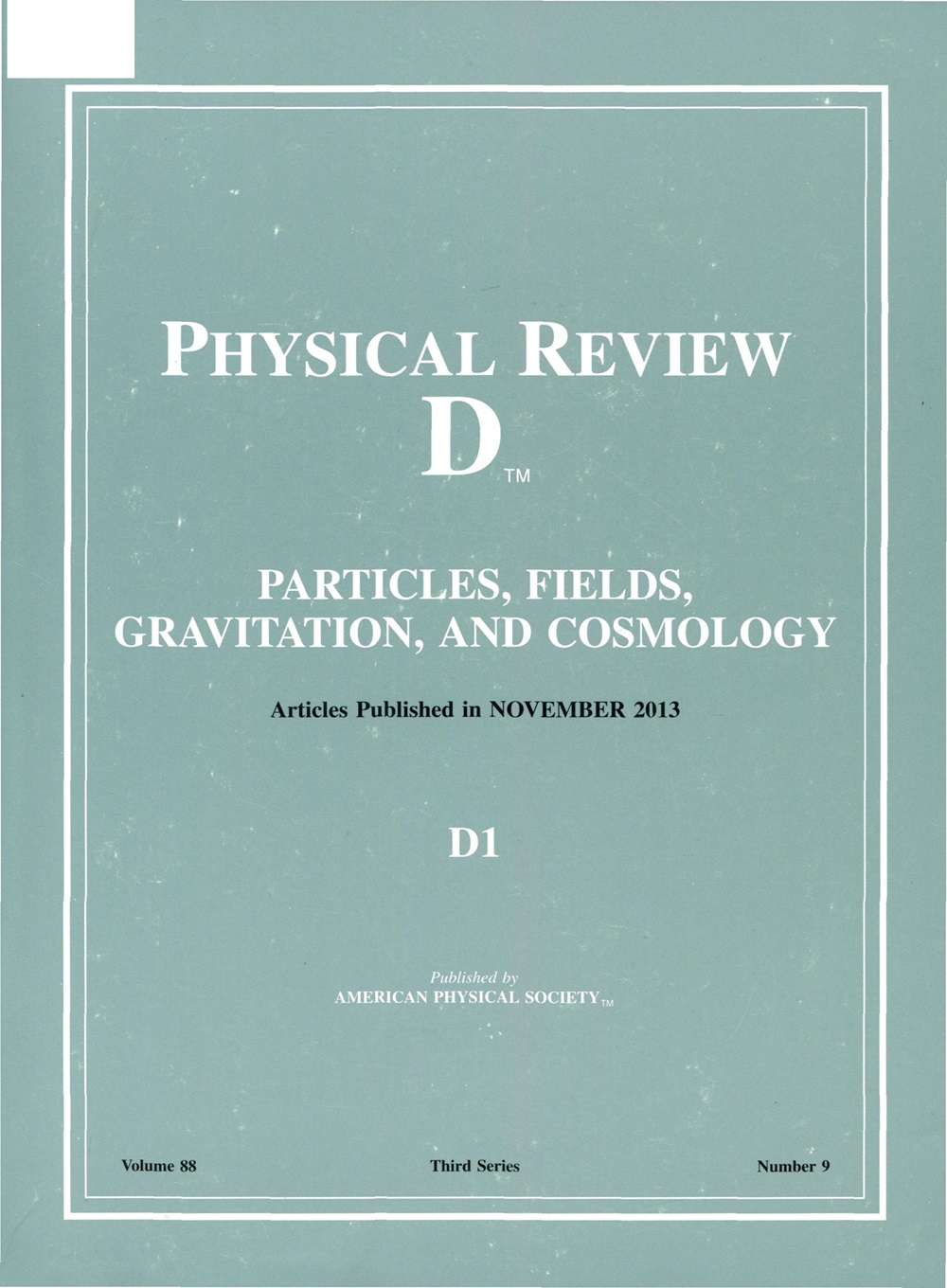Probing light mediators with recent PandaX-4T low-energy electron recoil data
IF 5
2区 物理与天体物理
Q1 Physics and Astronomy
引用次数: 0
Abstract
Neutrinos elastically scattered off atomic electrons offer a unique opportunity to probe the Standard Model (SM) and beyond SM physics. In this work, we examine the new physics effects of light mediators through elastic neutrino-electron scattering using solar neutrinos at the low energy range of PandaX-4T. These mediators, with a mass less than 1 GeV, are common properties of extensions to the SM. Accordingly, we consider universal light mediator models involving scalar, vector, and tensor interactions allowed by Lorentz invariance, and the anomaly-free U(1)′ extensions of the SM with a new vector mediator such as the求助全文
约1分钟内获得全文
求助全文
来源期刊

Physical Review D
物理-天文与天体物理
CiteScore
9.20
自引率
36.00%
发文量
0
审稿时长
2 months
期刊介绍:
Physical Review D (PRD) is a leading journal in elementary particle physics, field theory, gravitation, and cosmology and is one of the top-cited journals in high-energy physics.
PRD covers experimental and theoretical results in all aspects of particle physics, field theory, gravitation and cosmology, including:
Particle physics experiments,
Electroweak interactions,
Strong interactions,
Lattice field theories, lattice QCD,
Beyond the standard model physics,
Phenomenological aspects of field theory, general methods,
Gravity, cosmology, cosmic rays,
Astrophysics and astroparticle physics,
General relativity,
Formal aspects of field theory, field theory in curved space,
String theory, quantum gravity, gauge/gravity duality.
 求助内容:
求助内容: 应助结果提醒方式:
应助结果提醒方式:


